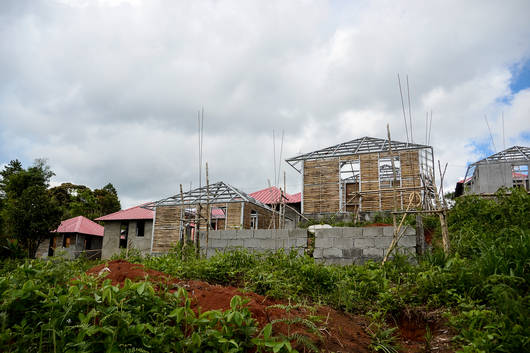Holcim Davao supports Habitat project for new Matigsalug homes
Building solutions provider Holcim Philippines, Inc. partnered with non-profit housing organization Habitat for Humanity to support the Embassy of Brunei’s project to build homes for 47 Matigsalug families who lost theirs to Typhoon Pablo (Bopha) in 2012. Holcim Davao donated 142 tons of cement in March for the houses and community facilities of the beneficiaries. Funded by the Embassy of Brunei and supervised by Habitat Philippines, the project, in Barangay Baganihan in Davao City’s Marilog District was initiated by the Matigsalug-Manobo Tribal People Council of Elders, Inc. and supported by the local government. The project is set to be finished in June. Holcim Davao Plant Manager Xavier Kennedy said the donation is in line with the company’s commitment to help the country build better and to support noble efforts related to construction, such as that of Habitat. Habitat Philippines Managing Director and CEO Charlie Ayco thanked Holcim for the support that enabled his organization to implement the design that respects the culture of the beneficiaries. The 25-square meter Matigsalug houses follow the single-detached bamboo-reinforced house design conceptualized by Habitat, and approved by the National Housing Authority, and the Department of Public Works and Highways. Built on the upland areas of Marilog, the houses are designed to be environment-friendly, disaster-resilient and earthquake resistant. The village’s layout also considered the tribal customs and tradition of the Matigsalug-Manobo Tribe. Ayco explained that more cement was used in building the foundation of the structures on the sloping terrain, respecting the Matigsalugs’ affinity to nature. He added that Habitat plans to work with the Matigsalug community in developing the village as a tourism site to showcase indigenous culture for the residents’ additional livelihood opportunities.






